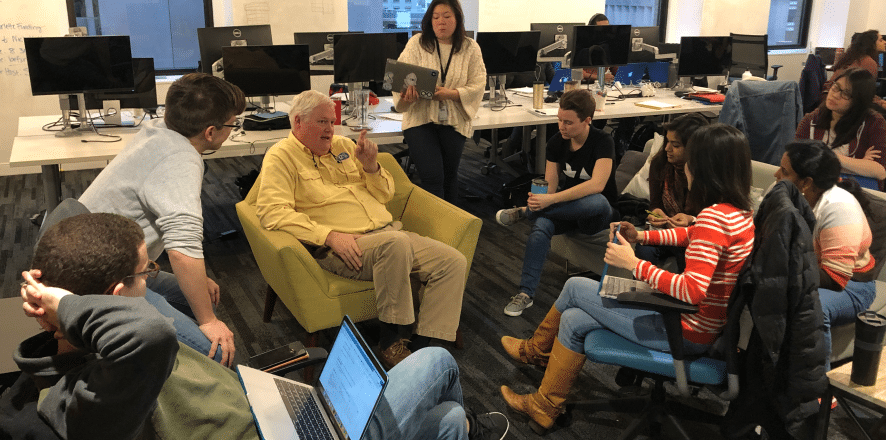For newbies to the tech industry, it can seem as if coders speak a different language. In fact, they do. There are more than 600 notable coding languages to choose for projects – and more to be added in our fast-paced digital world.
Although the list of programming languages continues to grow, there are a few popular coding languages that power nearly every digital device you own and website you visit. Java, Python, C, C++, JavaScript, C#, Ruby, PHP, and Objective-C are among the most popular coding languages.
But for now, we’ll focus on Java.
Java is a very popular programming language that some refer to as “the basics.” According to the TIOBE Index for July 2017, Java is still the most used programming language in the world. Created in 1995, it powers some of the biggest enterprise platforms on the market. The parent company of the language, Oracle, estimates that there are more than nine million Java developers in the world.
It’s no wonder why Java is a great starting point for newbies entering the world of coding.
Java is a general-purpose computer programming language. It is interpreted and intended to let application developers “write once, run anywhere” (WORA). This allows code to run in many places without much updating. Writing, compiling and debugging a program is simple in Java, although the language is moderately difficult to learn.
Java is the foundation program for Android applications, so it’s the general choice for mobile developers. Java is also common for web and desktop apps as well as applications that run on servers. It is versatile and helps to create modular programs and reusable code.
The creators of Java, James Gosling, Mike Sheridan, and Patrick Naughton, had five main principles to creating the language. Oracle refers to those design goals as:
- It must be “simple, object-oriented, and familiar”.
- It must be “robust and secure”.
- It must be “architecture-neutral and portable”.
- It must execute with “high performance”.
- It must be “interpreted, threaded, and dynamic”.
In addition to Java, there are Java Application Programming Interfaces (APIs), which are a set of prebuilt template classes used in a variety of programs.
What is it used for?
Since the code is a general-purpose code it can be transformed for varied uses. Here are a few:
- Android and iOS apps are developed in Java.
- Software development
- Creating desktop graphic user interfaces
- Java was used to build the popular game Minecraft.
- The digital capability to use interactive maps online is usually run through Java.
- Many online games are created in Java.
Why learn Java?
This coding language scores high in many areas but it is a great start in the coding industry because is it beginner friendly, scalable, well-known, and good prospective future.
Java is a high-level language, which means it handles most of the complex details of the computer, so the developer can focus on programming instead of tedious details.
As a statically typed code, Java is more defined than dynamically typed languages.
A benefit is that language is actively worked on to stay relevant resulting in fewer bugs. In the coding world, this is referred to as backwards compatibility. Simply put, it’s when the code stays relevant for a long time without needing to update/download new programs.
Career Opportunities
Java has proved its longevity for being one of the oldest in the programming code game. While new languages enter the market every week, Java has maintained its spot as one of the most used and effective.
With the constant thirst for new and innovative programs to allow companies to grow, Java developers are in demand. Superstars in the tech industry, such as Amazon, IBM and Google use Java for much of the backend development of their sites.
According to Salaries Hub, experienced Java developers earn, on average $93,251 per year, with the top 90th percentile making $129,67 and the 10th percentile making $68,225.
In January 2017, Independent named Java Developers as a “Top 10 Graduate Careers with Best Prospects for 2017.”
Conclusion
All in all, learning coding is not always the easiest when the terms seem to fly over your head. But remember, Zip Code Wilmington is here to help. Go back to a few of our previous posts to gain more clarity:
- “Eight Reasons You Should Learn Java”
- “Java in Great Demand for Great Reasons”
- “3 Modern Tech Juggernauts that Leverage Java”
We’re hoping by now you have a little background of the possibilities of Java. We’re also hoping that overhearing the coders talk, sounds a little less like gibberish.
Next up, Python.
